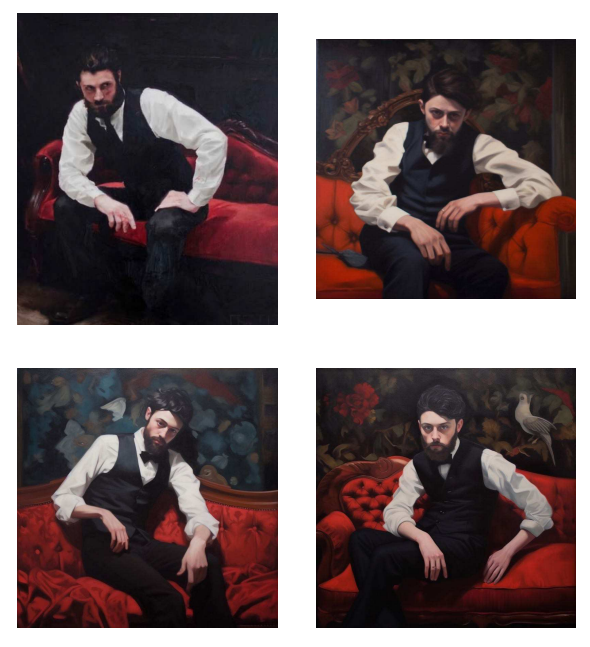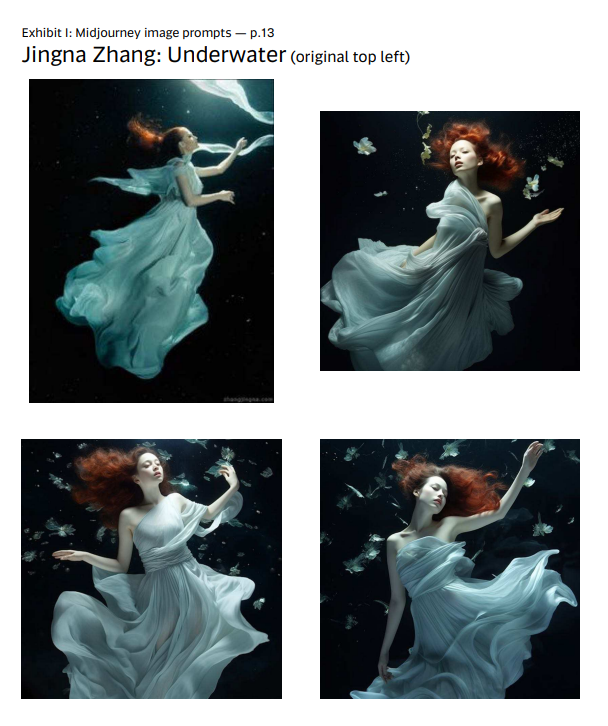Law & Politics
A Class Action Lawsuit Brought by Artists Against A.I. Companies Adds New Plaintiffs
The initial lawsuit was filed by three artists; an amended complaint includes seven other creatives.

The initial lawsuit was filed by three artists; an amended complaint includes seven other creatives.

Adam Schrader

The lawyers representing a group of artists who filed a class action lawsuit against three A.I. companies—Midjourney Inc, DeviantArt Inc, and Stability A.I.—have filed an amended complaint to address concerns of the court after a federal judge dismissed some of their claims in October.
The October decision by U.S. District Court Judge William H. Orrick was a blow to the three artists who had originally filed the lawsuit: Sarah Andersen, Kelly McKernan, and Karla Ortiz.
At the time, Orrick allowed one count of copyright infringement to move forward against Stability A.I. for allegedly copying the 16 works for which Andersen had registered her copyrights with the U.S. Copyright Office, considered the core claim of the lawsuit.
But he had dismissed several other claims of alleged infringement of works by McKernan and Ortiz, allowing the artists time to amend the complaint. The chance to amend a complaint can allow a plaintiff to add additional points for consideration and even address any concerns of the court. In this case, the court had identified specific topics where it sought more details of the allegations made.
“We believe that the amended complaint addresses the court’s requests,” lawyers Joseph Saveri and Matthew Butterick said in an emailed statement to Artnet News. “The amended complaint… shows the ways in which defendants’ A.I. image generators copy plaintiffs’ work, and how the output of these generators is used to compete with or supplant the plaintiffs’ work in the marketplace.”
Indeed, the entire lawsuit has been reworked and rewritten, jumping from a 46-page complaint filed in January to 94 pages—and over 450 when including published evidence exhibits showing the alleged copyright infringement. Much of the additions are technical, pertaining to descriptions of the machine-learning process and precisely how the works of the artists were used to train the models at question.
Perhaps the first changes immediately noticeable on the amended complaint is the addition of seven new plaintiffs, identified as Hawke Southworth, Grzegorz Rutkowski, Gregory Manchess, Gerald Brom, Jingna Zhang, Julia Kaye and Adam Ellis.
“Ok this is huge! I’m officially joining @kortizart @scribbles_sarah @Kelly_McKernan as plaintiff in our class action lawsuit with other awesome plaintiffs @GeraldBrom, Greg Machess, @zemotion, Julia Kaye Adam Ellis and Hawke Southworth!” Rutkowski said on Twitter, confirming the new plaintiffs.

An image created by Jingna Zhang is seen on the top left with recreations made using Midjourney also pictured. Photo courtesy of court documents.
Zhang, a freelance artist and photographer, also issued a public statement on their website and said the amended complaint “breaks down the tech” behind image generative A.I. models and copyright in a way that is easy to understand, gives a clearer picture on what the lawsuit is about, and “sets the record straight” on some misleading headlines that have been in the press this past year.
“I am very grateful that we now have photography represented in this lawsuit, because gen AI models are heavily trained on the works of our industry, from hobbyists to professionals alike, and I believe we should be heard too,” Zhang said. “To my fellow sisters and brothers in creative industries affected by this exploitation of our work, I hope this case can continue to give voice to the countless thousands of us, and set a legal precedent that makes things right.”
The amended complaint also adds a new defendant: Runway A.I., the company that trained Stable Diffusion 1.5.
“Though the defendants claim to be selling access to A.I. image products, what they’re really selling is copyright infringement as a service. The scale of this misappropriation is staggering and unprecedented, with violations of law happening at every phase: the gathering and copying of the dataset, the training and deployment of the model, and the output images,” the amended complaint reads.
“Worst of all, the defendants hold out their A.I. image products as being able to create substantially similar substitutes for the very works they were trained on—either specific training images, or images that imitate the trade dress of particular artists—including plaintiffs.”
More Trending Stories:
Art Critic Jerry Saltz Gets Into an Online Skirmish With A.I. Superstar Refik Anadol
The Old Masters of Comedy: See the Hidden Jokes in 5 Dutch Artworks
A Royal Portrait by Diego Velázquez Heads to Auction for the First Time in Half a Century
How Do You Make $191,000 From a $4 Painting? You Don’t
In Her L.A. Debut, South Korean Artist Guimi You Taps Into the Sublimity of Everyday Life
Two Rare Paintings by Sienese Master Pietro Lorenzetti Come to Light After a Century in Obscurity